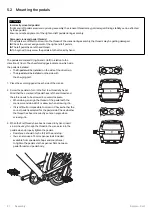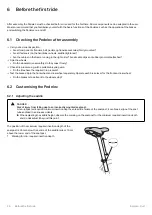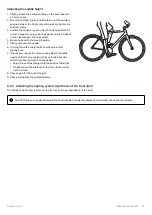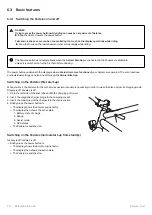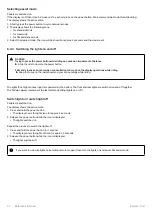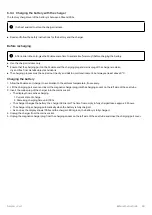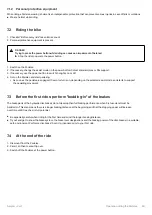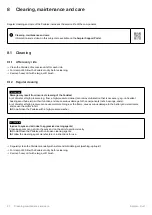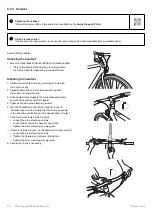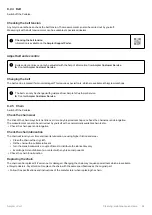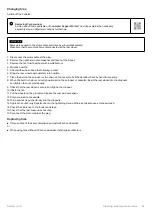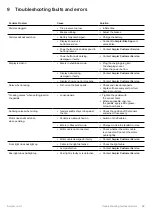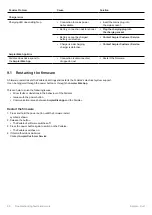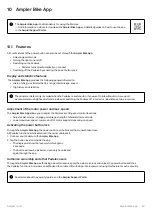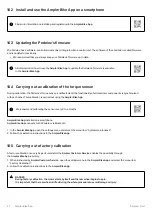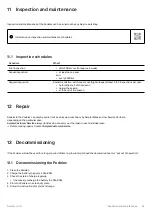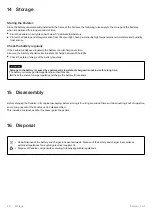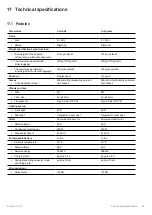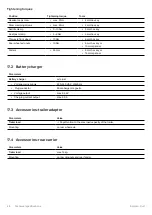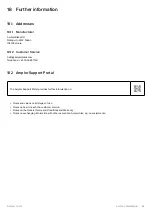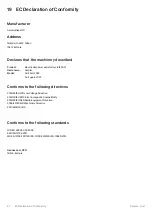
35
Ampler – Curt
8.2.6 Wheels
Switch off the Pedelec.
Checking the wheels
J
Check wheel alignment and true.
J
Replace a damaged wheel in consultation with
Ampler Customer Service
, or have it replaced in a bicycle workshop in accordance
with
Ampler Customer Service
instructions.
Check spokes
J
Check the wheel spokes.
J
If the spokes of the wheels are damaged or loose, only have them trued or replaced by
Ampler Customer Service
or
by a bicycle workshop.
Check the thru-axle of the front wheel
J
Check the thru-axle of the front wheel.
J
Tighten the thru-axle. Pay attention to the specified tightening torque.
Check the axle of the rear wheel
J
Check the nuts of the rear wheel axle.
J
Tighten the nuts. Pay attention to the tightening torque and the instructions for correct tightening.
y
When using a torque wrench: Follow the manufacturer's instructions.
8.2.7 Tires
Switch off the Pedelec.
Check tire pressure
The correct tire pressure leads to low rolling resistance and can prevent punctures. It also leads to a better response between
torque sensor and motor.
In general, the specifications on the sidewall of the tire are the maximum allowed pressures in bar or psi. In everyday use,
the tire pressure can be set a little lower, but
not
higher.
We recommend the use of a floor pump with a pressure gauge, on which the tire pressure is clearly shown.
J
Follow the manufacturer's instructions.
J
Check tire pressure before each ride and approximately once a week.
y
max. 5.3 bar
Check tire tread and sidewall
The sidewall should be uniformly round in shape and free from cracks, sidewall bulges and grooves.
The tires should have sufficient, even tread.
1. Check sidewall and tread depth.
2. If the tread depth is too shallow or if there is visible damage to the sidewall: Change the tires.
Cleaning, maintenance and care

